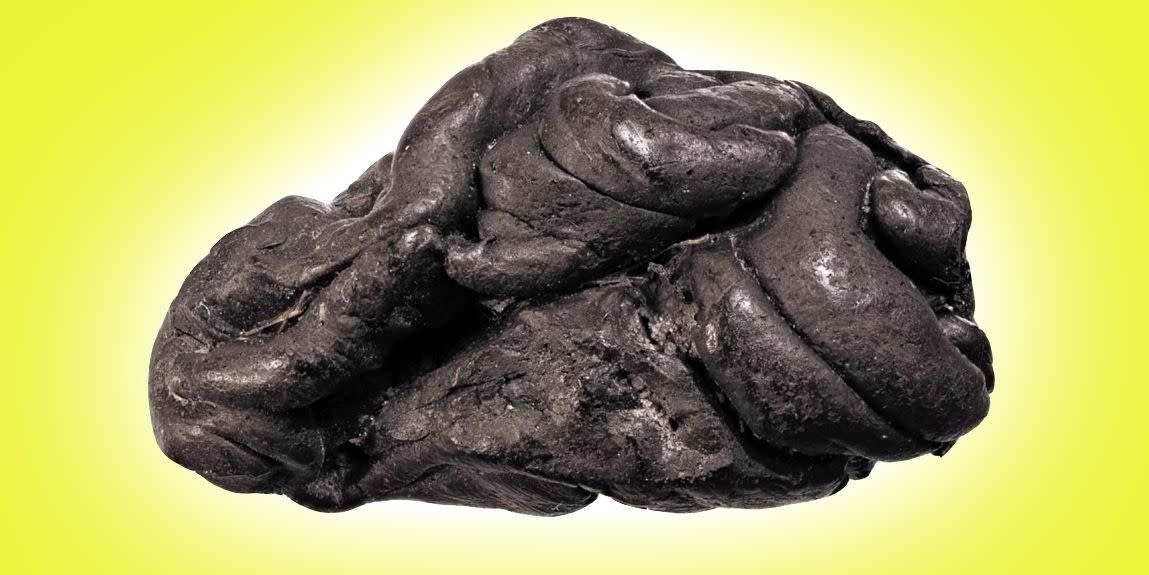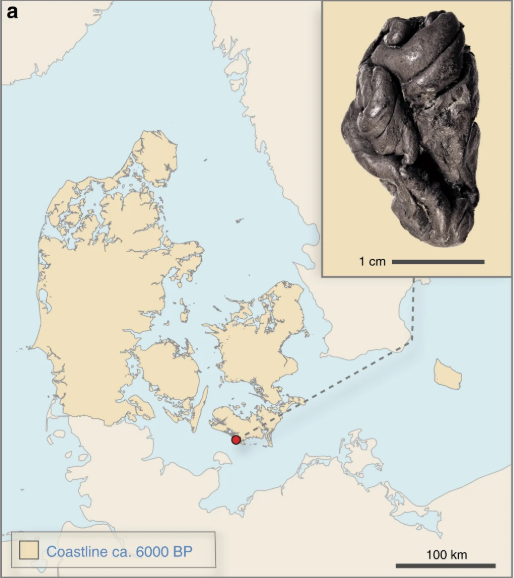This 5,700-Year-Old Chewing Gum Contains a Complete Human Genome

Scientists found a complete human genome in a piece of chewed pitch from 5,700 years ago.
Ancient DNA is usually found in short strands, so scientists must have a lot in order to identify a complete genome.
Pitch never solidifies and is a rich potential source of more ancient human DNA.
Scientists have extracted and fully sequenced the genome of a human girl from a piece of chewing gum that’s 5,700 years old. The finding is the first ever complete genome from ancient times that wasn’t obtained from human bones.
The researchers, based in Copenhagen, discovered the pitch during a dig on Lolland, one of the over 400 low-lying islands that make up Denmark. The genome showed that the gum’s ancient chewer was female and shared characteristics with both Western and Northern European populations.
To date samples like the piece of chewed birch tree pitch that we’re colloquially calling “chewing gum,” scientists use radiocarbon dating, where they identify carbon isotopes and how they radioactively decay over time. All living things deteriorate in a way that generates a signature scientists can read. Think of the way TV detectives identify local insect eggs at a crime scene and use that to decide how long ago a crime occurred, except the insects are carbon molecules. (That bug thing is legit, too.) Even the magnetic field, which has crept in circles around the globe for its entire history, affects how carbon deteriorates.
Identifying DNA is similarly nitty-gritty and based on observations of other materials from the same ancient timeframe. “We generated approximately 390 million DNA reads for the sample, nearly a third of which could be uniquely mapped to the human reference genome,” these researchers write, where a “read” refers to a number of base pairs in one intact segment of a strand of DNA. The entire human genome forms a genomic library, and a read is an individual part of that library. It’s ancient genetic Goodreads.

With 390 million reads that were mostly of the short length (an official size designation) that researchers associate with ancient DNA, scientists had more than enough coverage to completely sequence this ancient human’s genome. “[T]he human endogenous DNA content in the sample was extremely high and comparable to that found in well-preserved teeth,” the researchers write, which is especially interesting; chewing gum touches the teeth, but it’s not like DNA passes out of the teeth by osmosis. Scientists identified her sex, her “dark skin, dark brown hair, and blue eyes,” and that she was lactose intolerant.
From the gum, they also identified the ancient woman's microbiome. Her mouth contained bits of different bacteria and viruses that are all similar to stuff that’s still circulating now, including strains of strep and pneumonia viruses and gingivitis bacteria. These are considered part of the expected range in any human mouth and only cause illness or decay when they grow too far out of balance.

The woman also shows evidence of the Epstein-Barr virus, a mostly harmless virus “infecting over 90 [percent] of the world’s adult population” that can sometimes cause mono or increase risk of some cancers.
Based on a variety of traces of identifiable DNA linked with local plants and animals, the researchers have formed an impression of what TV detectives call “stomach contents”: what our ancient woman had been eating. With a mix that includes duck and wild hazelnuts, the posited meal helps scientists understand where an average person was obtaining their food during a time when farming was new and highly varied by region. The human genome gives clues to this, too, because migrating populations end up mixing, so the absence of certain genetic markers could mean groups hadn’t crossed paths yet or maybe never did at all.
The surviving genes are the big story here, but the reason they exist is a coincidence of many chemical factors. Pitch is an umbrella term for a substance that can occur naturally or, today, be made with petroleum and other synthetic ingredients. Asphalt is a form of pitch. Coal tar can be made into pitch. But what’s fascinating is that pitch is a liquid that appears to be a solid, leading to the genre of pitch drop experiments, where a piece of pitch is left alone to drip at its staggering natural rate of once every 10 years.
That’s partly because pitch is hygroscopic, meaning it continuously absorbs the water around it in the atmosphere. Like honey, pitch in the wild will never completely harden. If it’s sealed in an airtight container, it will never dry out; and if it’s left out, it will always find more moisture to absorb. This quality can help impede bacterial growth and decay around these samples as well. The scientists who identified the 5,700-year-old pitch chewing gum are hopeful their study is further evidence of a potentially rich source of ancient DNA.
You Might Also Like

